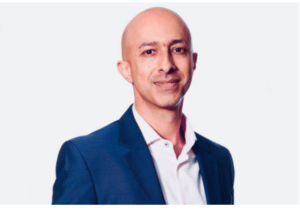
This usually prompts me to reflect on the generational gaps that exist in the workplace today, as well as how the workplace has evolved in the twenty-five years that I have been in corporate.
A changing workplace
One of the most significant workplace developments is diversity and inclusion (D&I), which has become one of the most talked about phenomenon in the workplace today, alongside trends such as the use of technology, remote working, and the prioritisation of human resources as a strategic company asset.
The recognition that having people from diverse backgrounds helps to build stronger teams has prompted employers to pay close attention to how they engage and nurture diverse employees, particularly the younger generation, which is quickly becoming the majority in the workplace.
Given the emphasis on D&I and the value it brings to the workplace, employers must consider employee satisfaction from the perspective of each individual employee.
As a result, ensuring a personalised approach to driving employee engagement has emerged as a critical focus area for all businesses and leaders.
In the midst of all of these changes in workplace priorities, technology has become deeply ingrained in our daily lives, particularly over the last two decades.
For example, innovations such as Zoom and Microsoft Teams have enabled people to work for companies located anywhere in the world from the comfort of their own homes.
As technology continues to shape society, it will undoubtedly play a key role in enabling future workplaces, particularly in empowering business leaders to better manage priorities such as tailored approaches to employee engagement.
Employee engagement is critical to achieving high levels of employee satisfaction, and technology can help make this possible.
Personalising employee engagement
One of the critical areas to ensuring a unique and personalised approach to employee engagement and satisfaction is talent management.
A 23-year-old graduate entering the workforce has very different career growth aspirations to a 55-year-old.
The younger employee is more likely to want to learn and advance quickly up the career ladder, whereas the older employee is more likely to be looking for stability as they approach retirement.
Managing this process successfully and ensuring a tailored and personalised approach to talent and career management for each employee’s specific needs, especially in large companies, can be difficult – if not impossible.
Employers can empower employees to reach their full potential by investing in tools and systems that automate learning and development, as well as enhance career planning and mapping.
Understanding employee sentiment
Employee feedback should be solicited on a regular basis to better understand employee sentiment and ensure that the company’s initiatives are aligned with employee expectations.
During the recent pandemic, for example, when most companies shut down and employees worked remotely, this became a priority.
Companies must invest in employee experience management tools to become better listeners.
This enables leaders to foster a listening culture and make decisions based on employee expectations, ensuring that each employee’s individual needs are well understood and met.
In conclusion, fostering a listening culture is critical to developing a purpose-driven approach that prioritizes diversity and inclusion, resulting in a committed and productive workforce that feels appreciated.
